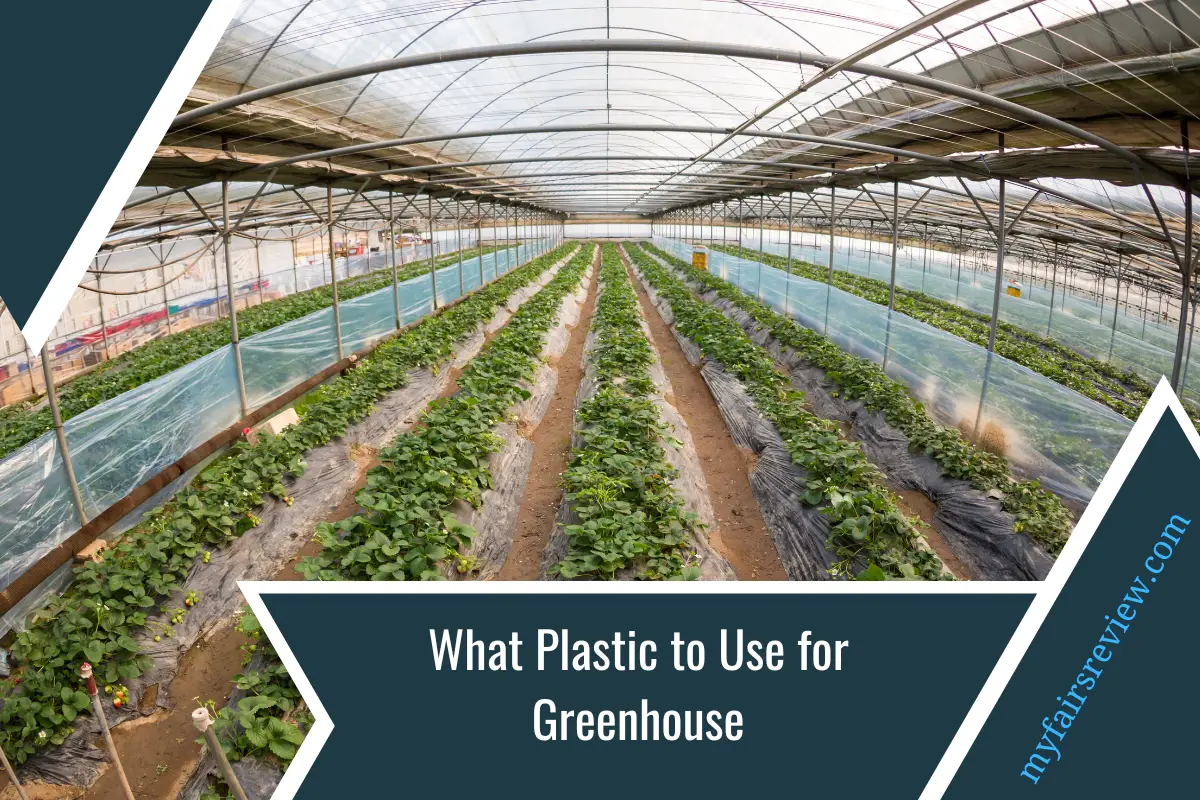Use UV stabilized polyethylene film as it offers durability and allows light transmission for greenhouse use. To create an effective and efficient greenhouse, choosing the right type of plastic is crucial.
UV stabilized polyethylene film is an ideal option as it provides durability while allowing the necessary light transmission for plant growth. With its ability to withstand the outdoor elements and its cost-effectiveness, this type of plastic is commonly used in greenhouse applications.
We will explore the benefits of using UV stabilized polyethylene film, how it compares to other plastics, and factors to consider when selecting the right plastic for your greenhouse. So, read on to learn more about the best plastic to use for a greenhouse.
Key Factors To Consider
When choosing the appropriate plastic for your greenhouse, there are several key factors to consider. Firstly, the climate and weather conditions in your area play a crucial role in determining the type of plastic that is most suitable. The plastic should be able to withstand extreme temperatures and fluctuations.
Secondly, durability and longevity are important considerations, as the plastic should be able to withstand wear and tear over time. Additionally, the plastic used should have good light transmission properties to allow sufficient sunlight to enter the greenhouse. UV protection is also essential to prevent the harmful effects of excess sun exposure.
Moreover, insulation properties are important to help regulate temperature and create a conducive environment for plant growth. Lastly, cost-effectiveness is a factor to consider, as different types of plastic come at various price points. By carefully considering these factors, you can select the ideal plastic for your greenhouse that meets your specific needs and requirements.
Types Of Plastic For Greenhouses
Polyethylene (PE) is one of the most commonly used plastics for greenhouse coverings. It is affordable and flexible, making it easy to install. Polycarbonate (PC), on the other hand, is known for its durability and excellent light transmission. It can withstand extreme temperatures and provides better insulation than PE.
Polyvinyl Chloride (PVC) is resistant to UV rays and has good insulation properties, but it may not be as long-lasting as PC. Ethylene-vinyl Acetate (EVA) is a newer plastic that offers high light transmission and thermal performance. It is also resistant to chemicals and has a longer lifespan compared to PVC.
Lastly, acrylic is a clear plastic that allows maximum light transmission and is resistant to shattering. Each type of plastic has its own advantages and disadvantages, so choosing the right one for your greenhouse depends on your specific needs and budget.
Comparing Different Plastic Options
Polyethylene (PE) is a commonly used plastic option for greenhouses. It offers several advantages, such as being affordable and easy to install. Additionally, it has excellent light transmission properties and provides good insulation for the plants. However, it does have some drawbacks, such as being less durable compared to other plastic options.
Polycarbonate (PC) is another popular choice for greenhouses. It is highly durable, offers good insulation, and is resistant to UV rays. However, it is more expensive than PE and can get yellow over time. Polyvinyl Chloride (PVC) is a cost-effective option that provides good insulation and UV resistance.
Unfortunately, it is not as durable and can release harmful chemicals when exposed to high temperatures. Ethylene-vinyl Acetate (EVA) is a flexible plastic with good light transmission and excellent insulation properties. However, it can be more expensive and less durable than other options.
Acrylic is a clear and transparent material that provides excellent light transmission. However, it is quite expensive and can be prone to scratches. Carefully considering the advantages and drawbacks of each plastic option is crucial when deciding on the best choice for your greenhouse.
How To Choose The Right Plastic For Your Greenhouse
Choosing the right plastic for your greenhouse begins with analyzing the climate and weather conditions. Assess the durability factor to ensure it can withstand the elements. Evaluate the light transmission and UV protection capabilities to provide adequate sunlight and protect against harmful rays.
Additionally, consider insulation properties to regulate temperature and prevent heat loss. Finally, calculate the cost-effectiveness by comparing prices and benefits. By considering these factors, you can make an informed decision and select the ideal plastic for your greenhouse.
Frequently Asked Questions For What Plastic To Use For Greenhouse
What Kind Of Plastic Is Best For Greenhouses?
Polyethylene plastic is the best choice for greenhouses due to its durability, UV resistance, and cost-effectiveness.
Is Clear Or White Plastic Better For Greenhouse?
Clear plastic is generally better for greenhouses because it allows more light to penetrate, aiding plant growth.
Can I Use 4 Mil Plastic For Greenhouse?
Yes, you can use 4 mil plastic for a greenhouse.
Is Polycarbonate Or Pvc Better For Greenhouses?
Polycarbonate is better for greenhouses because it is durable, transparent, and provides better insulation than PVC.
Conclusion
Choosing the right plastic for your greenhouse is crucial for the success of your gardening endeavors. Whether you opt for polycarbonate or polyethylene, both materials offer unique benefits and considerations. Polycarbonate, with its durability and insulation properties, provides a long-lasting solution for all-year-round gardening.
On the other hand, polyethylene offers affordability and flexibility, making it a popular choice for seasonal gardeners. Ultimately, your decision should be based on your specific needs, budget, and climate. When selecting your greenhouse plastic, be mindful of factors such as UV resistance, light transmission, and insulation capabilities.
Remember to consider the longevity and maintenance requirements of your chosen material. With the right plastic, you can create the ideal environment for your plants to thrive and achieve a greener, more sustainable lifestyle. Happy gardening!



